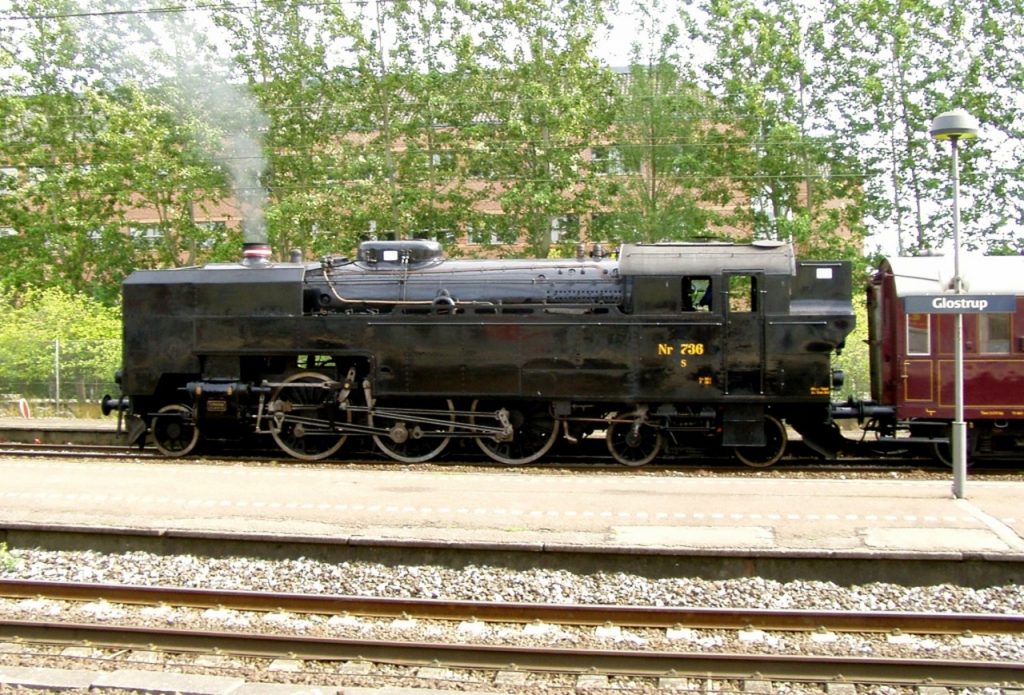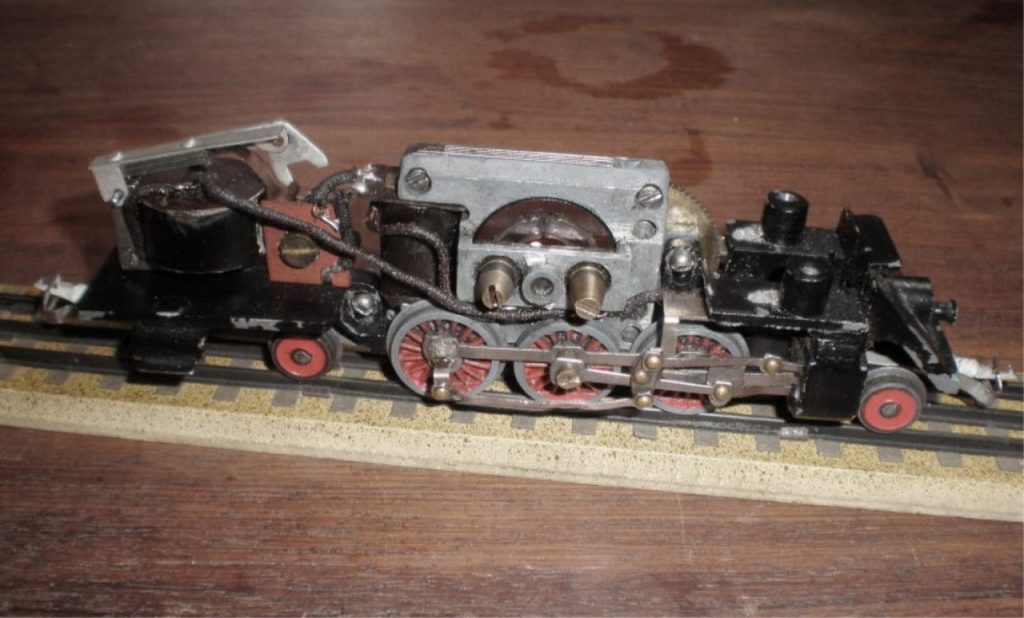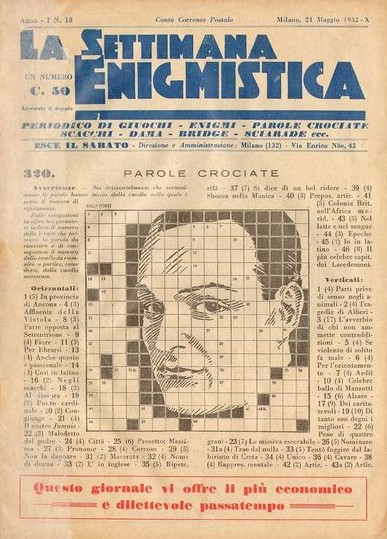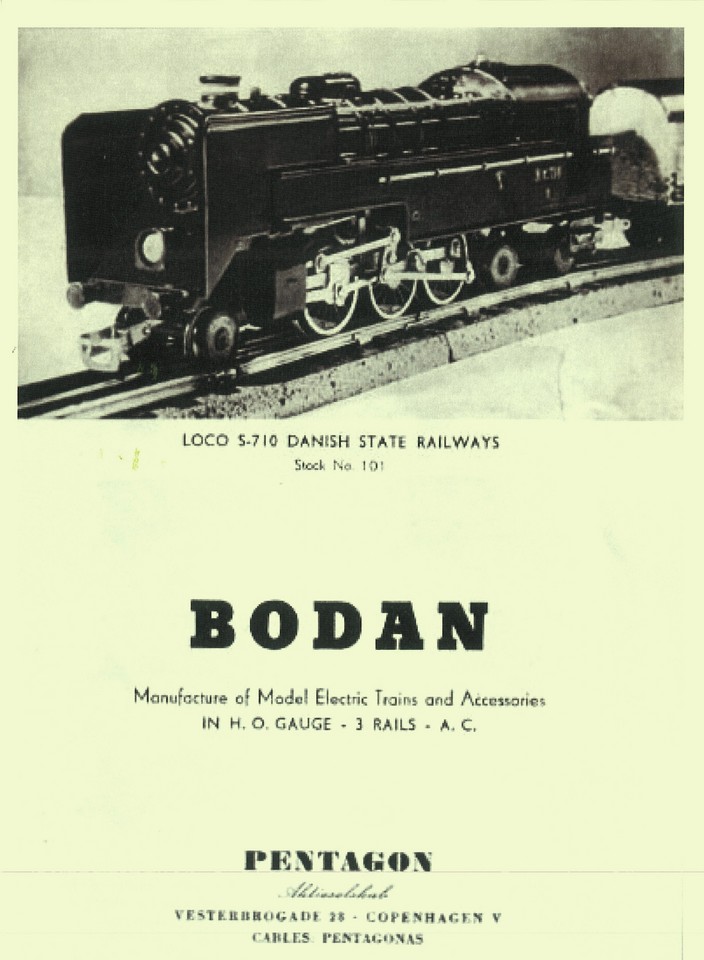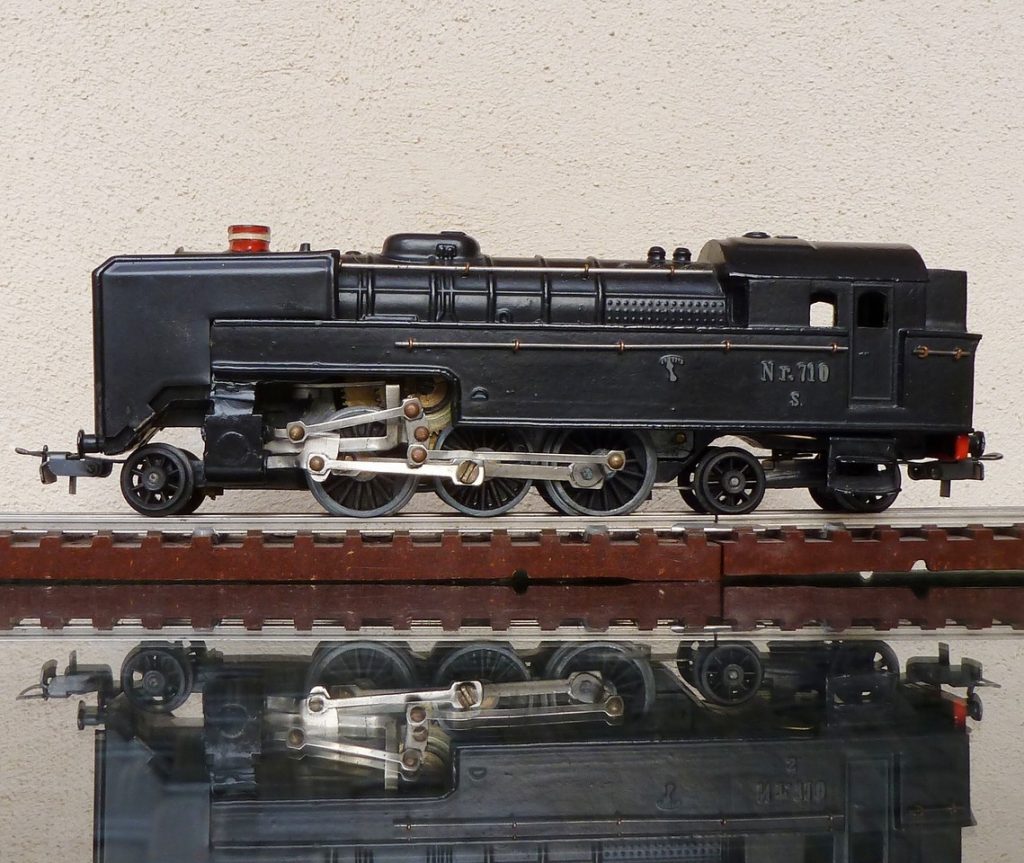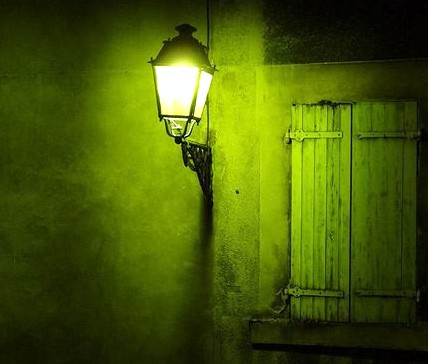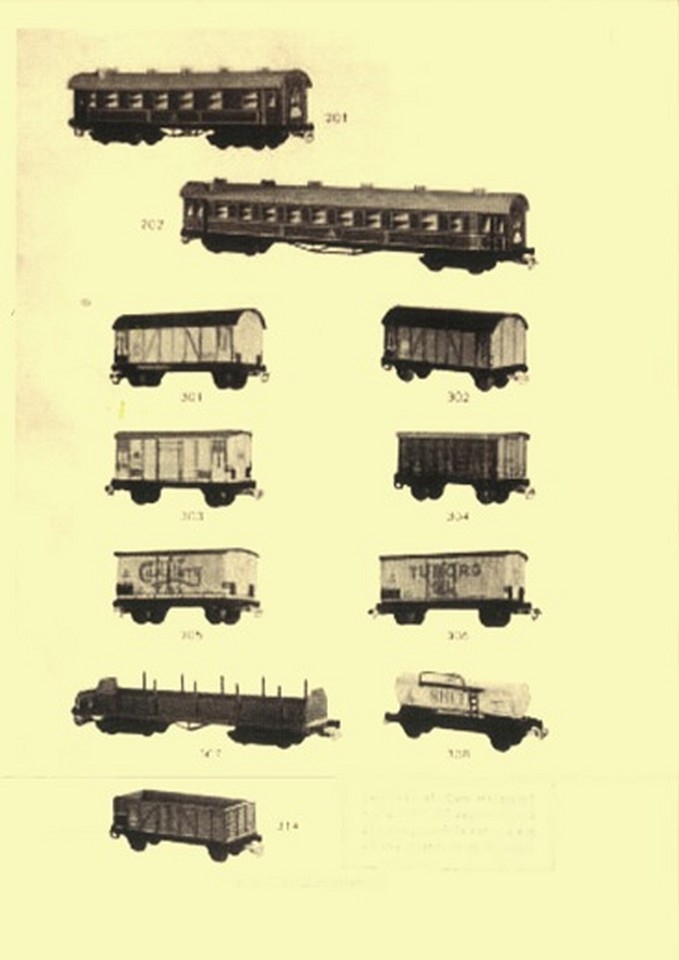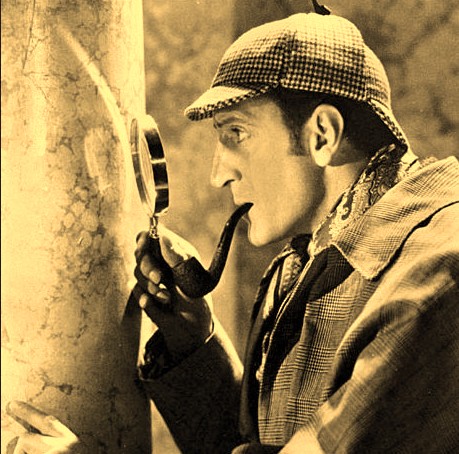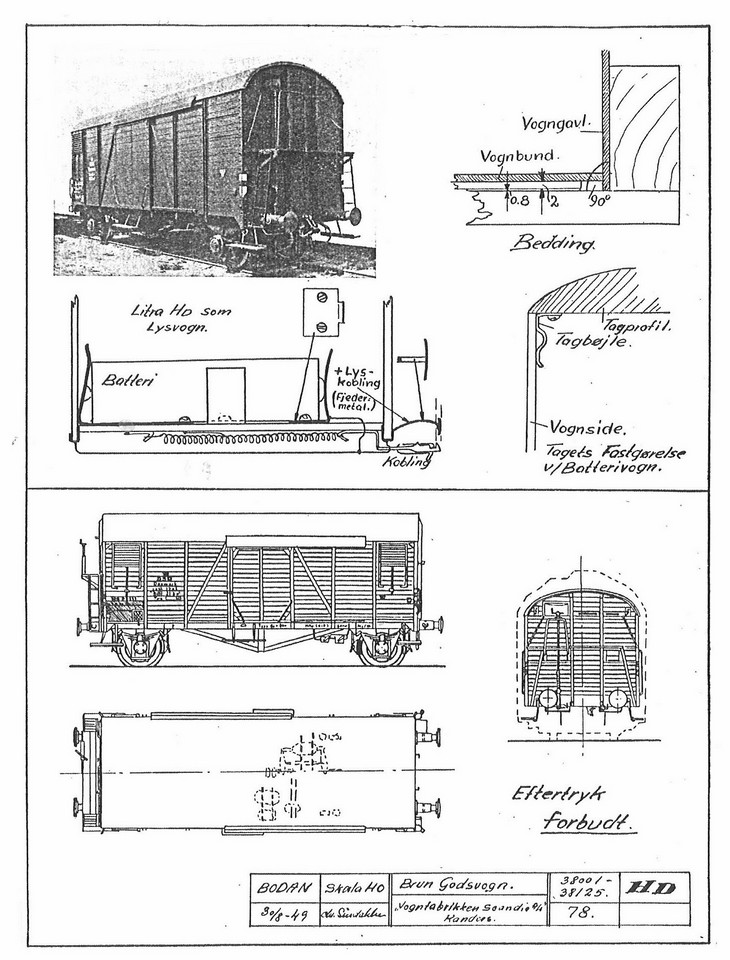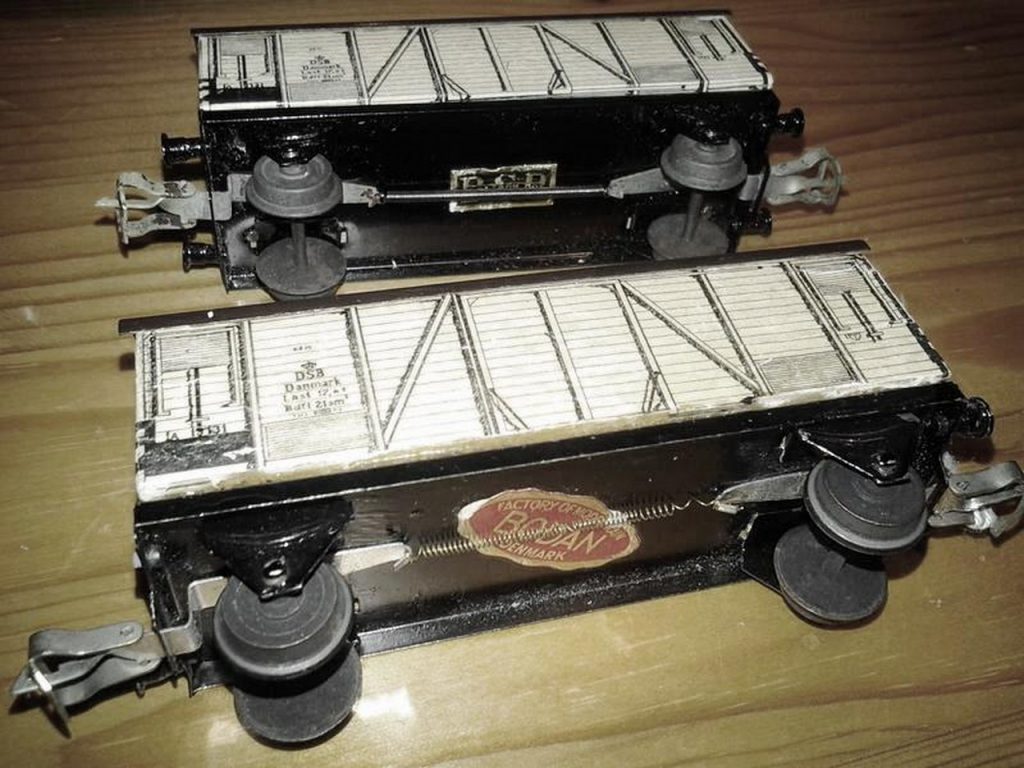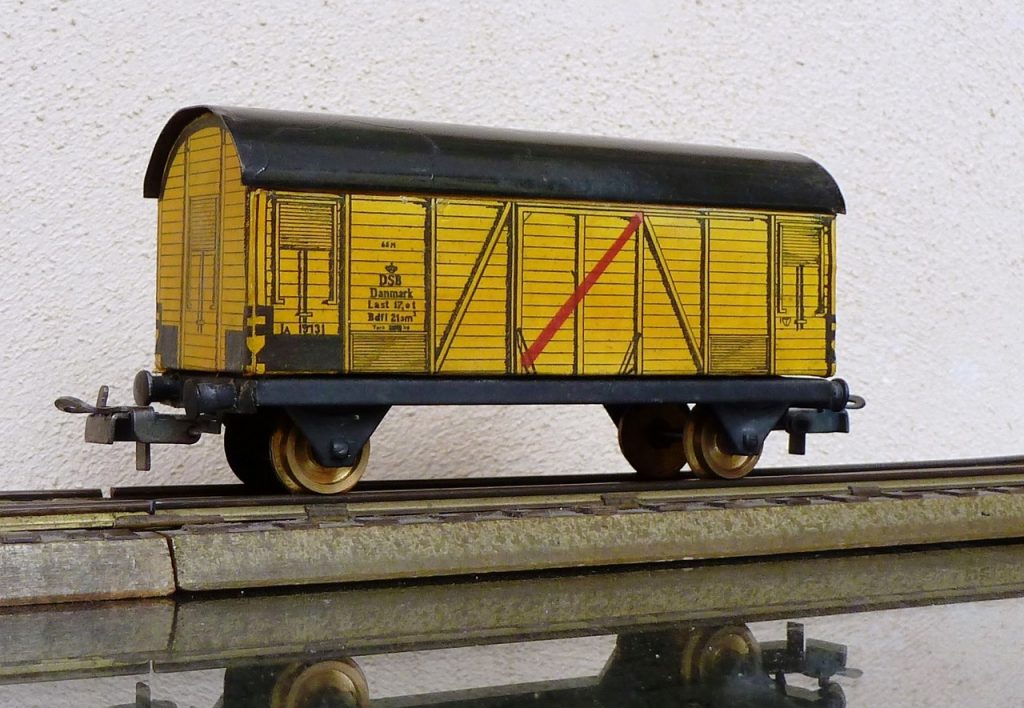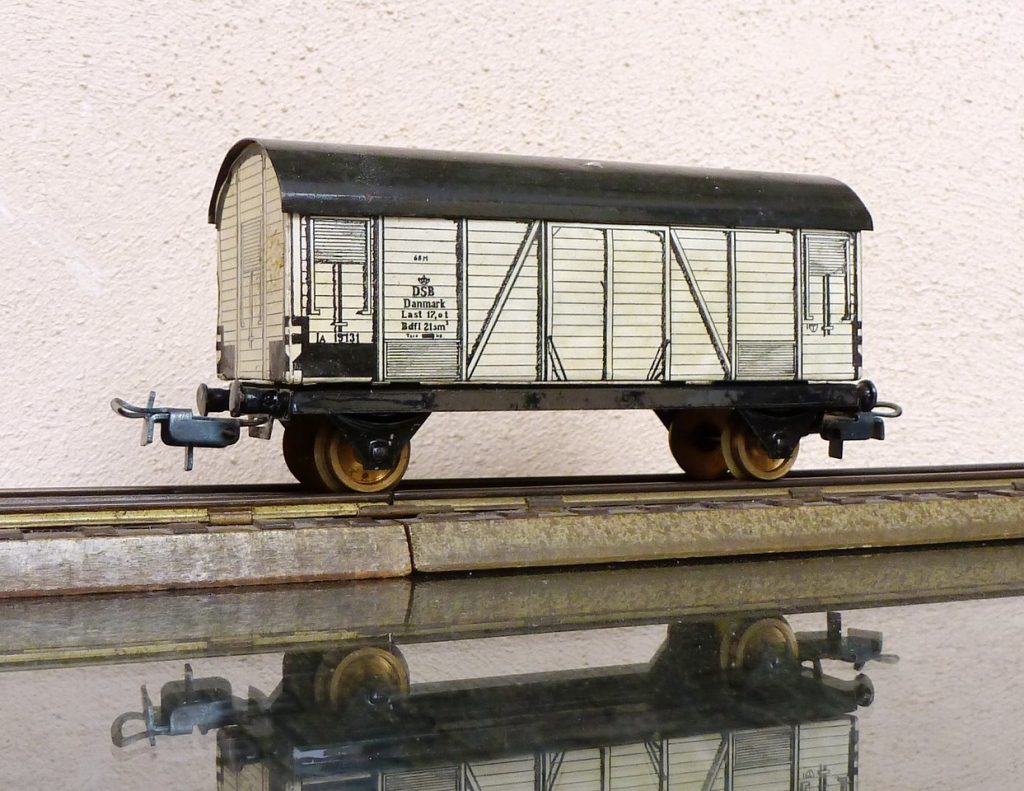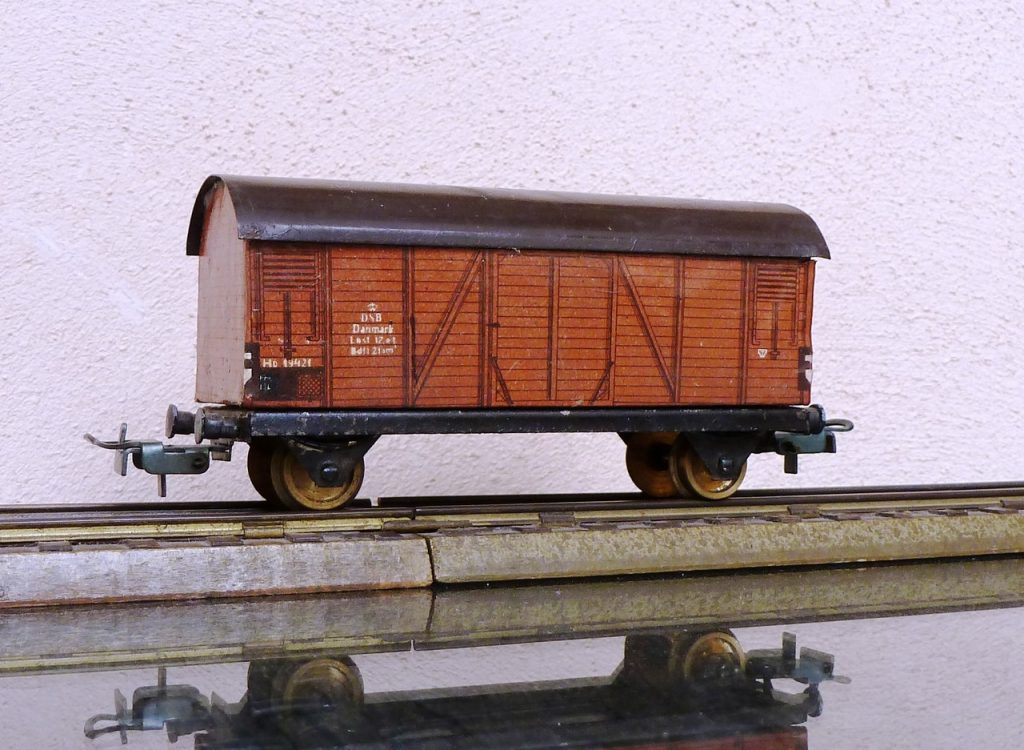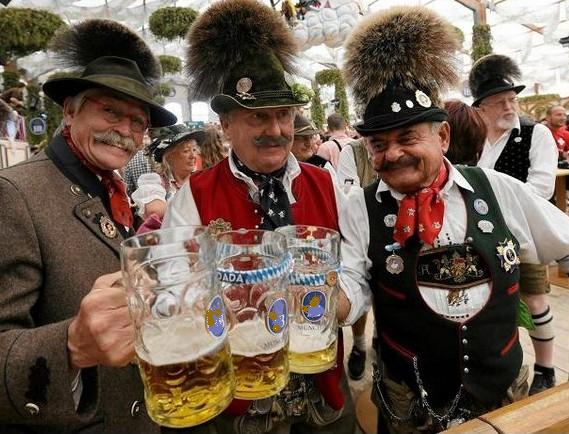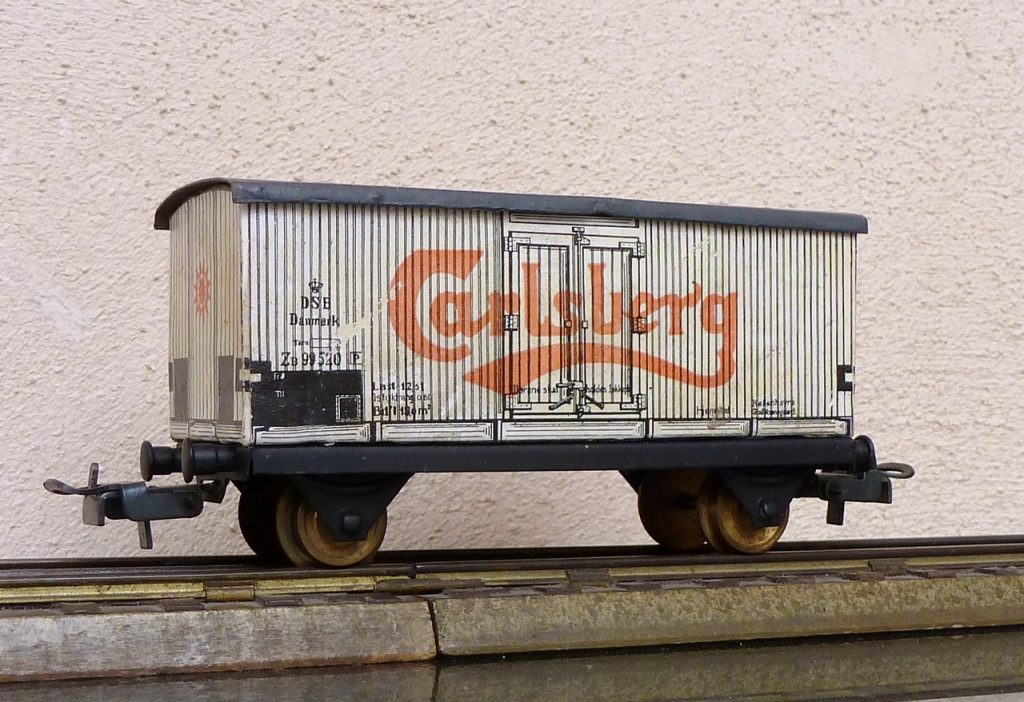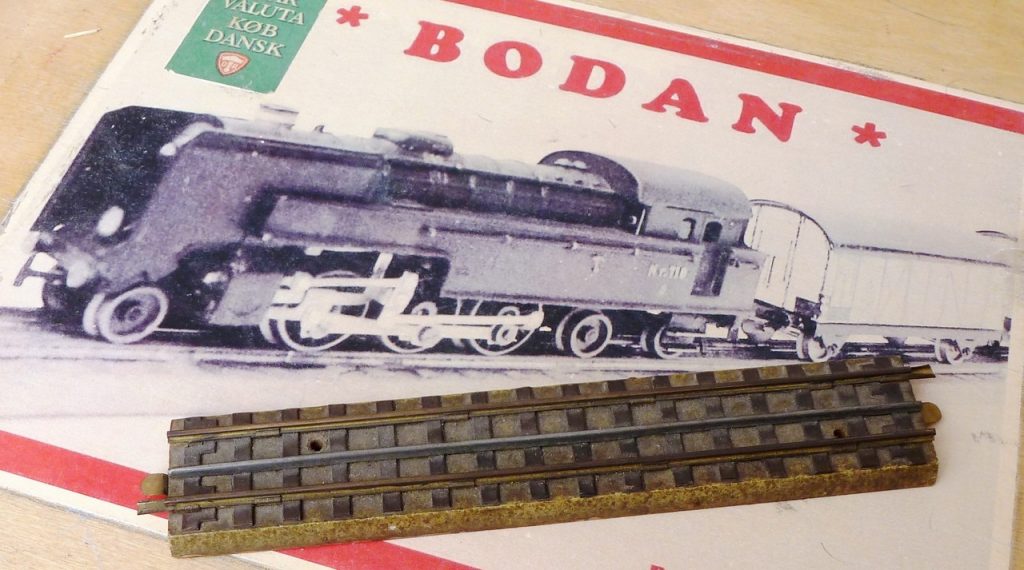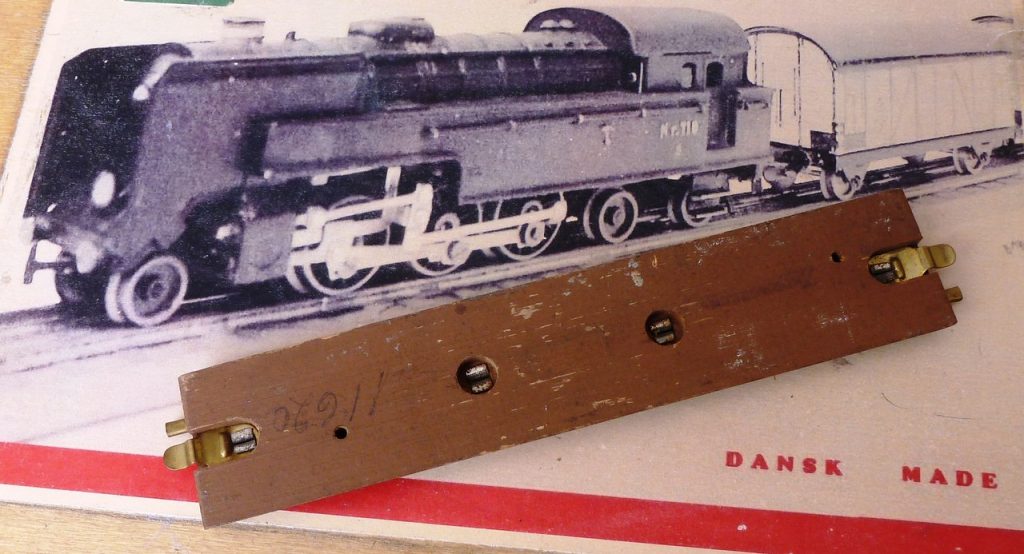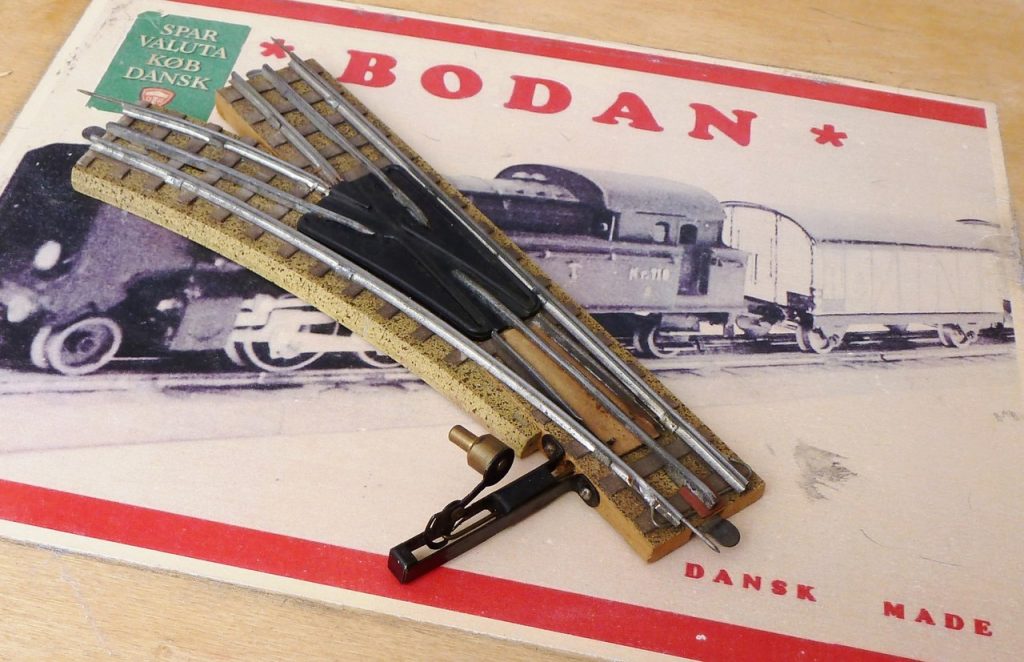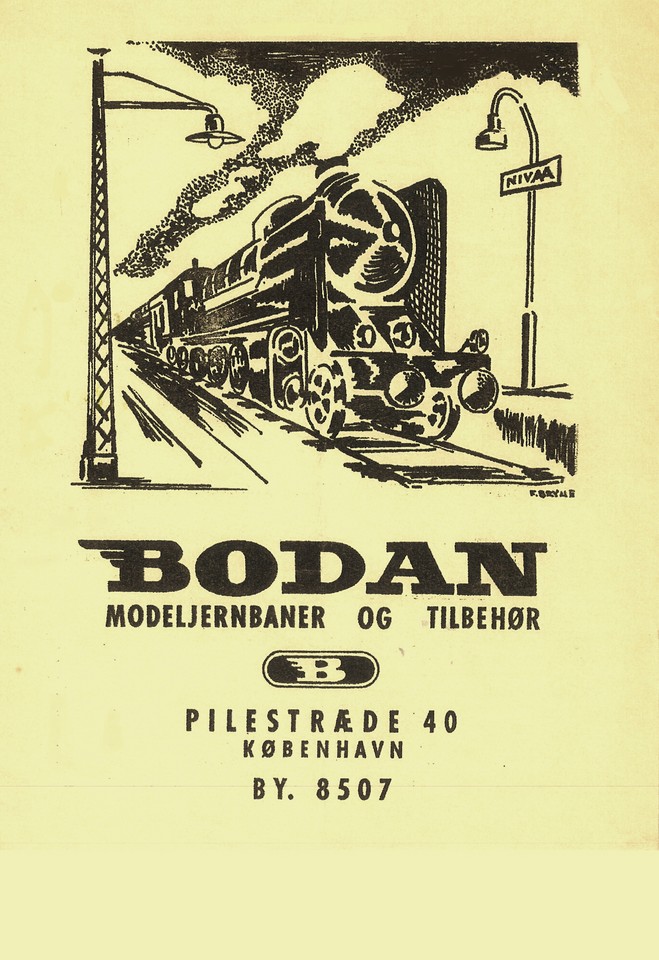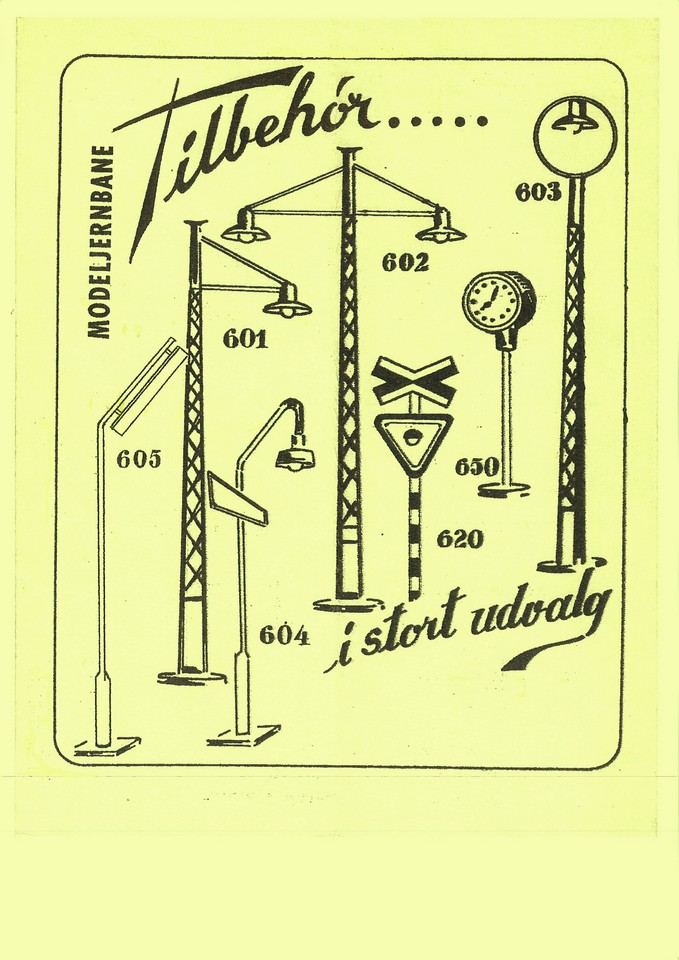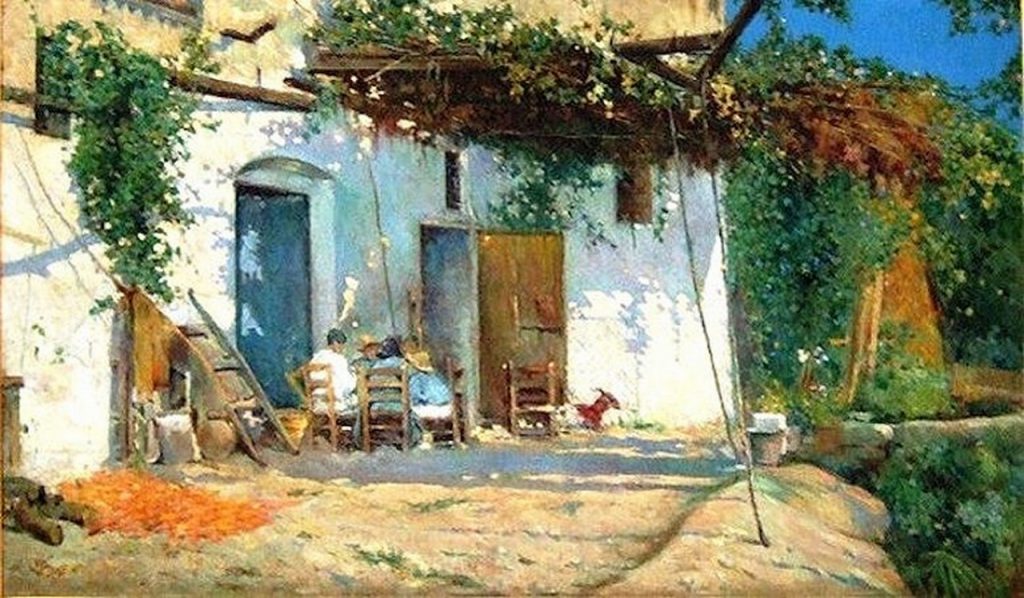Antonio Reyna: Bodan
(Written by P.G.)
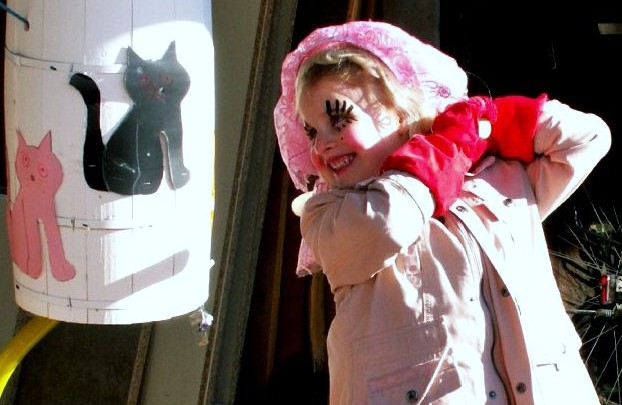
As well as Italy, Denmark was also a fertile ground for our beloved trains in HO / OO scale in the immediate post-war period.
We have already spoken of Otto Michaelsen and his locomotives of different colours ….
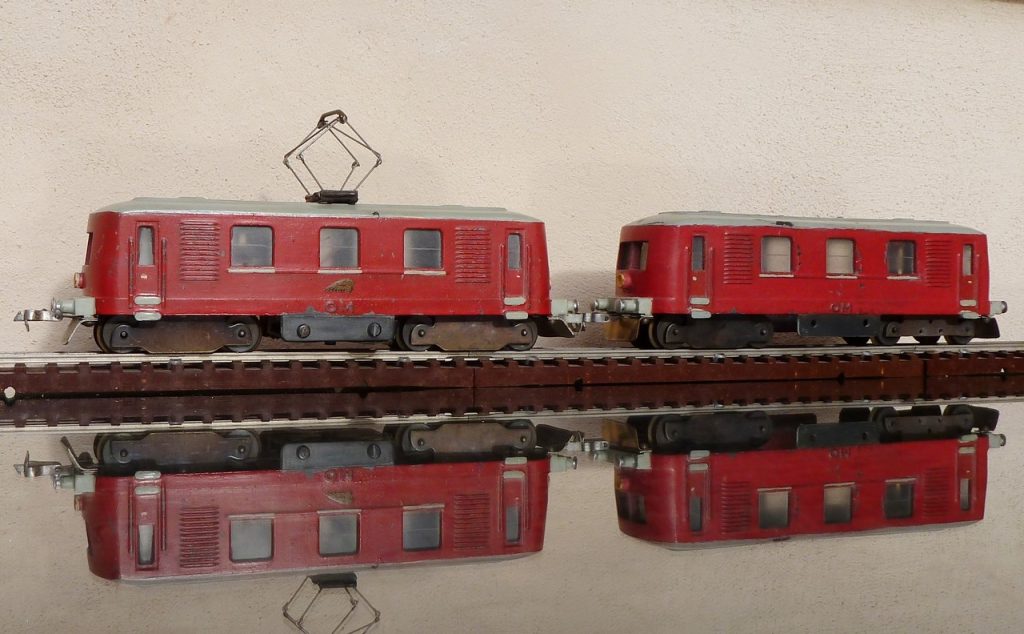
… which are not the only ones to have ran on miniature Danish tracks of those times.
To give some other examples, we admire the originality of the Modeltrafix wooden and zamak locomotives
….
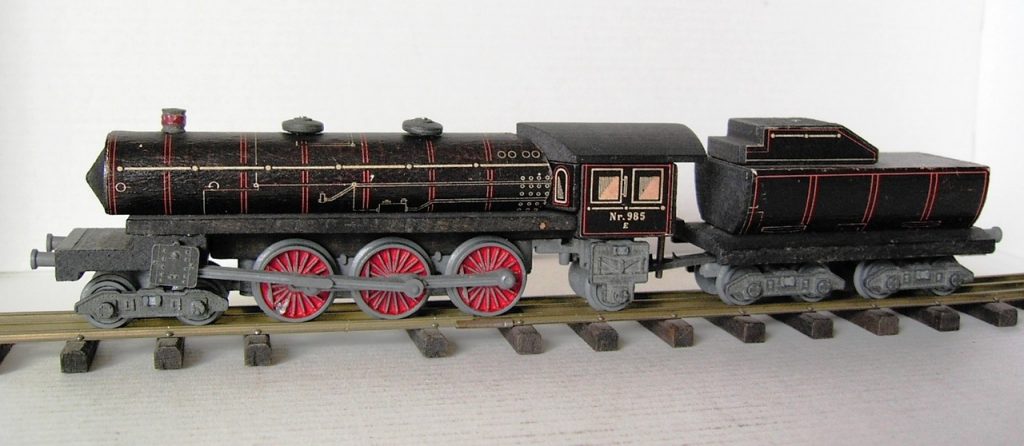
… which have become very rare today, such as this Pacific which is powered by a specific motor-wagon inserted in the train.
Our men in miniature
have already told us about a trip on this Wittrock tin railcar … .
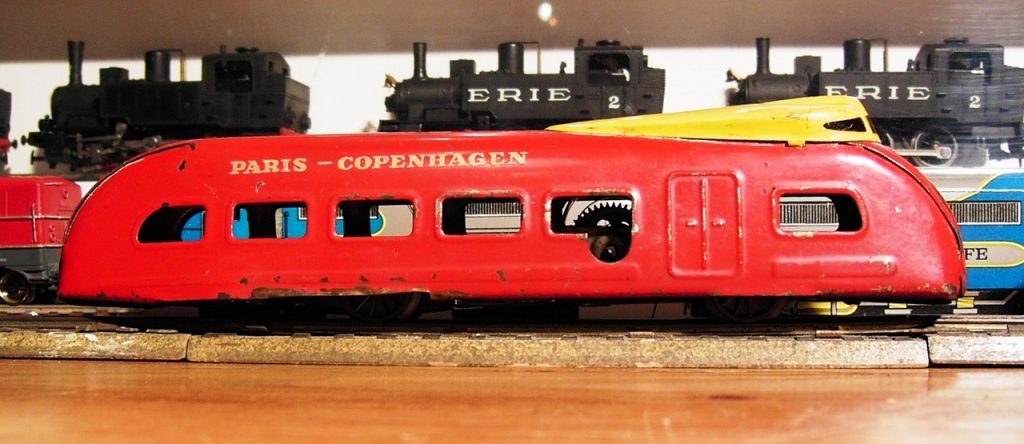
…. But we must not forget the Long production models.
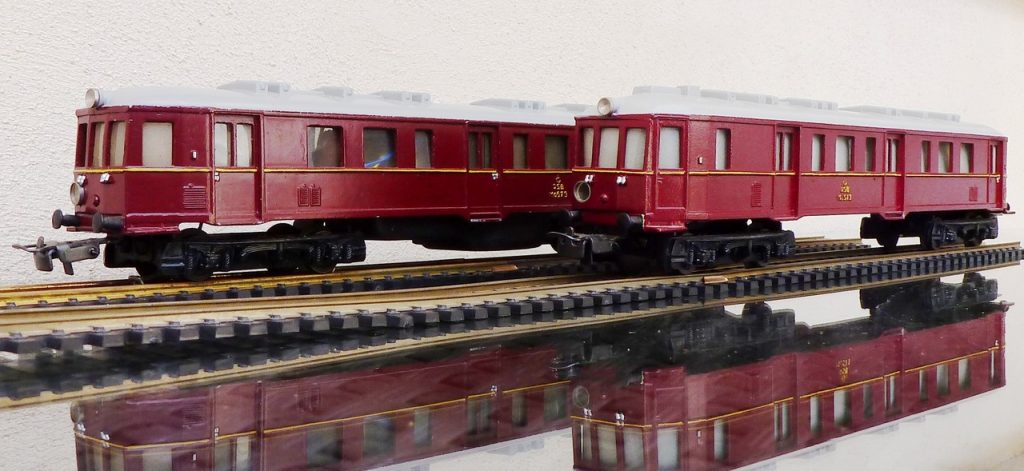
… which we shall discuss in greater detail in the future, and also the more recent Dan-Train models, …

However, for the moment, we will just deal with Bodan.
In 1946 in Copenhagen ….
… an advertising leaflet appeared which gave news of an electric railway in OO scale produced in Denmark with the DSB brand.
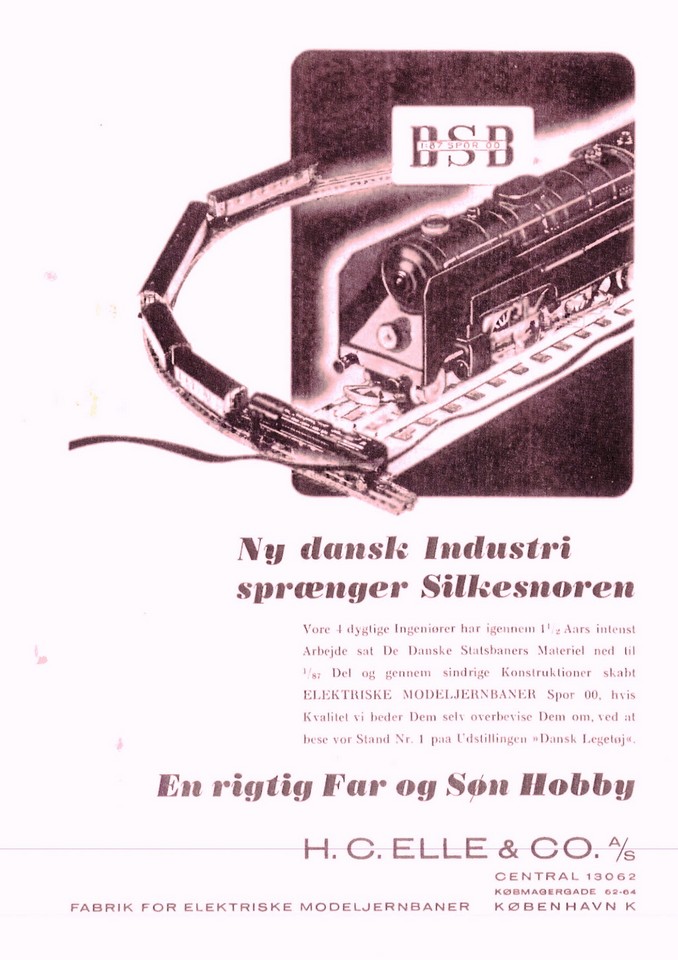
Two years later, in ’48 in the same city, in 79 Adelgade Street, …
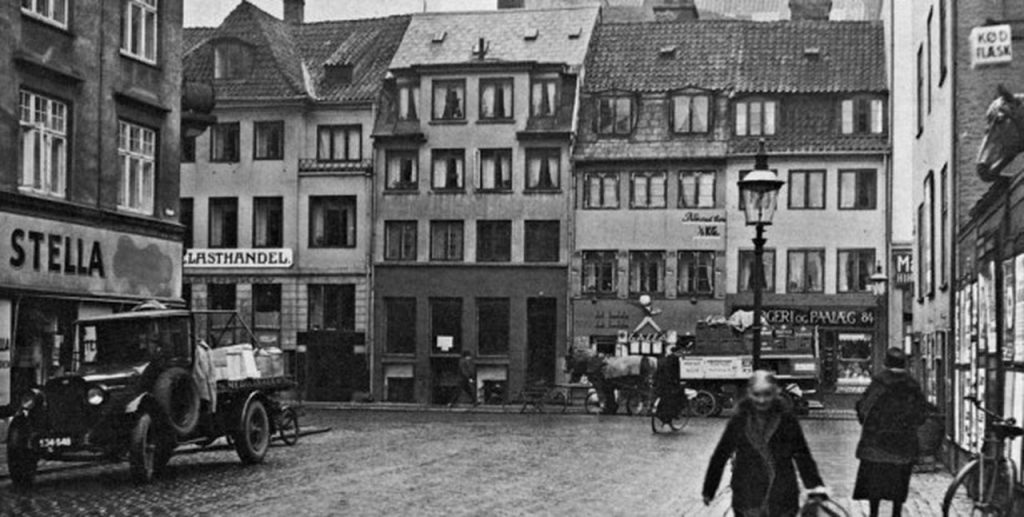
… Bohé Jorgensen, a Danish craftsman, after taking up the DSB brand, founded the company Bodan (from Bohé Denmark) …
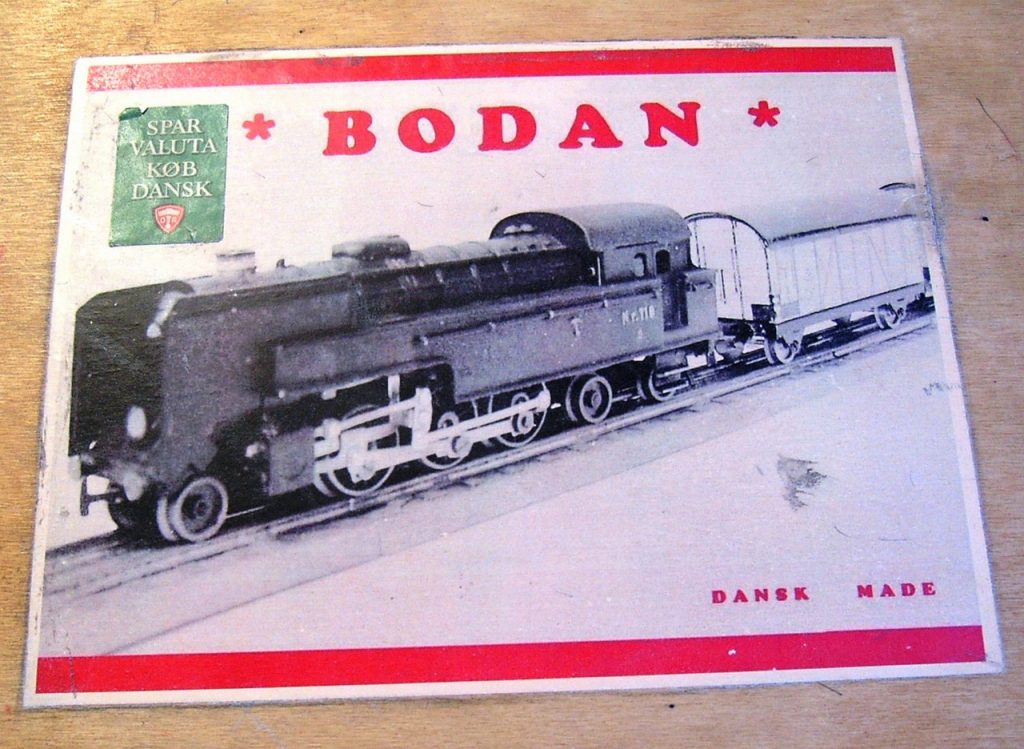
… to produce electric trains in OO scale with AC Operation on a three-rail track.
Note, on the cover of this Bodan the green pack dot with the invitation to buy Danish products and save currency ….

The 1949 catalogue announced the first and, to my knowledge, the only locomotive of this brand, “Litra 710 S” or “S-Class 710”.
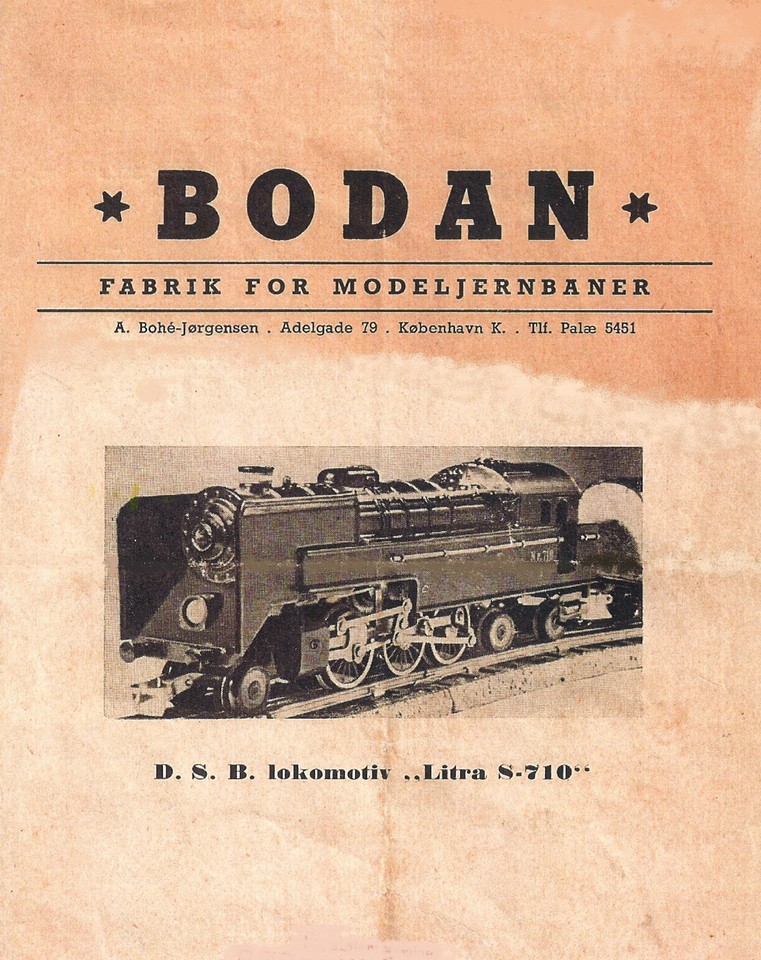
In fact this limited series of locomotives …
was put into service in 1924 by the Danish railways lines on short distance journeys where good acceleration,
frequent stops and quick turnaround times were required.

Their running gear 1′- C – 2 ‘ and other features of these machines resemble those of the FNM 290, shown here in the second version of the COS.MO model … ..
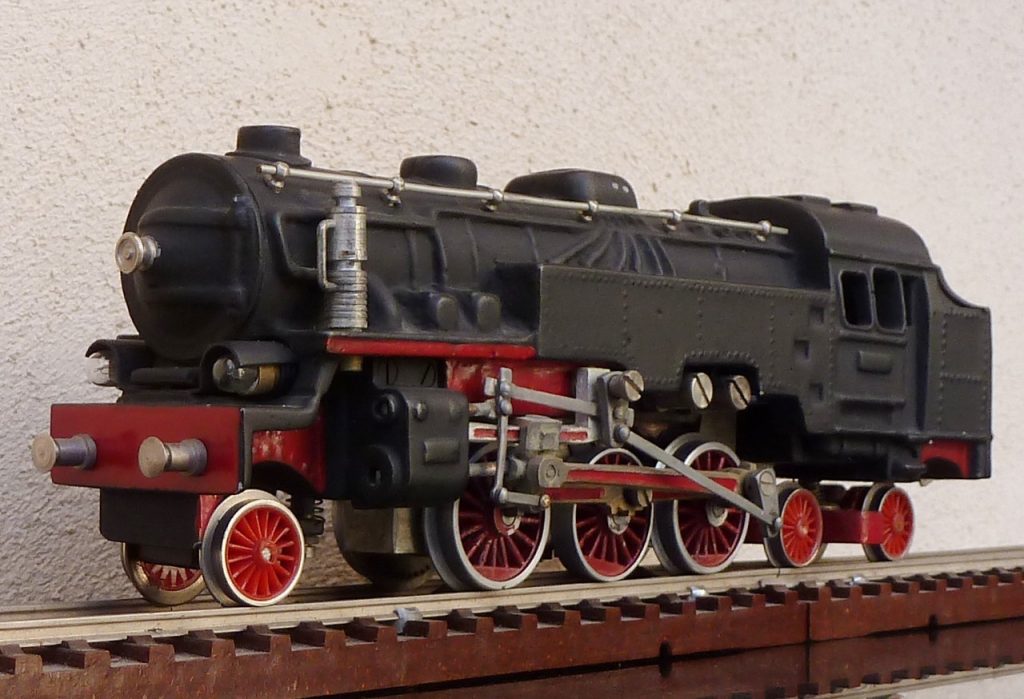
The Bodan model of this locomotive, completely metallic, has been proposed both assembled or in the assembling box.
I must say that the assembly of this kit was not for beginners, given the complexity of the mechanical and the electrical parts ….
Anyone who bought the Litra 710 in kit form had to be, as also in the case of the Rivarossi Hiawatha, not only rather masochistic to be burdened, in exchange for a price reduction of 8%, with all the effort of adapting the pieces, of installation, wiring and painting, but also, in my opinion, an expert in puzzles
and riddles in order to interpret the assembly instructions ….
He would have required professional dexterity and magic hands in order to perform the two welding joints on the motor coil terminals.
The complex Bodan reversal relais has always had adjustment and operation problems and on the “American” catalog of ’52 …
…. the Litra S 710 was offered for operation on three rails DC, first with the inducers of the motor coils fed through a selenium rectifier, then with permanent magnet motor.
This construction design …
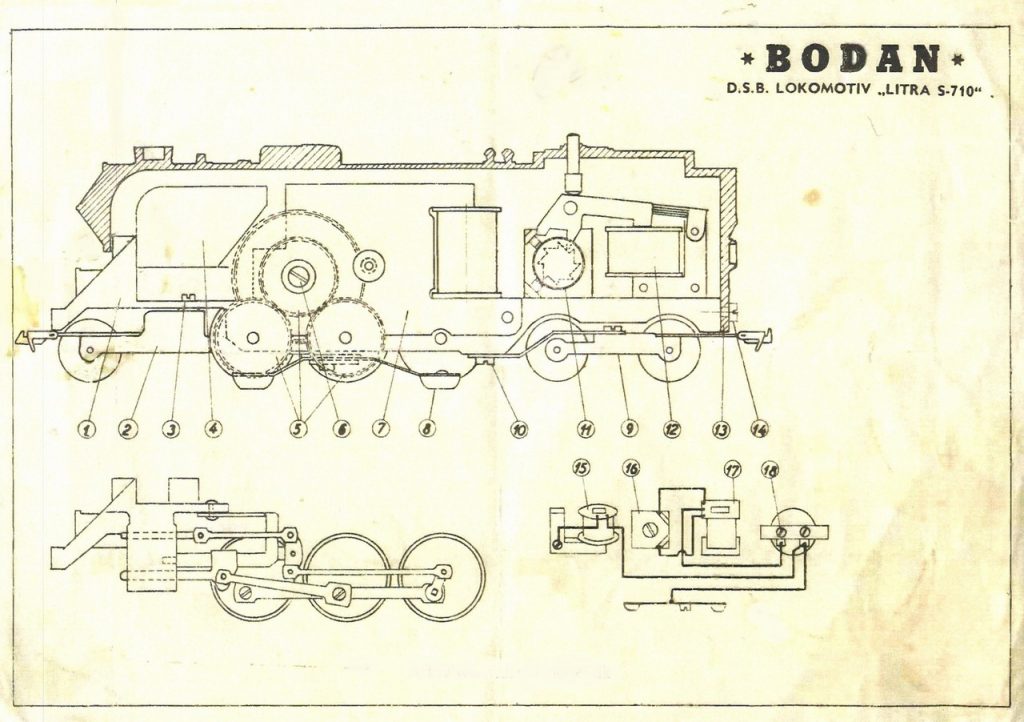
…shows in its longitudinal section of the arrangement of the engine, the transmission and the relay, as well as the wiring diagram of the locomotive.
The first version, in AC ….

… is characterized by a motor with apparent brush holders, a raised cabin roof , supporting wire wheels in bakelite, nickel-plated steel handrails and by “Maerklin type couplings”.
In the photo taken from the left side …
you can see the large gears of the transmission meshing on the first and second drive axle.
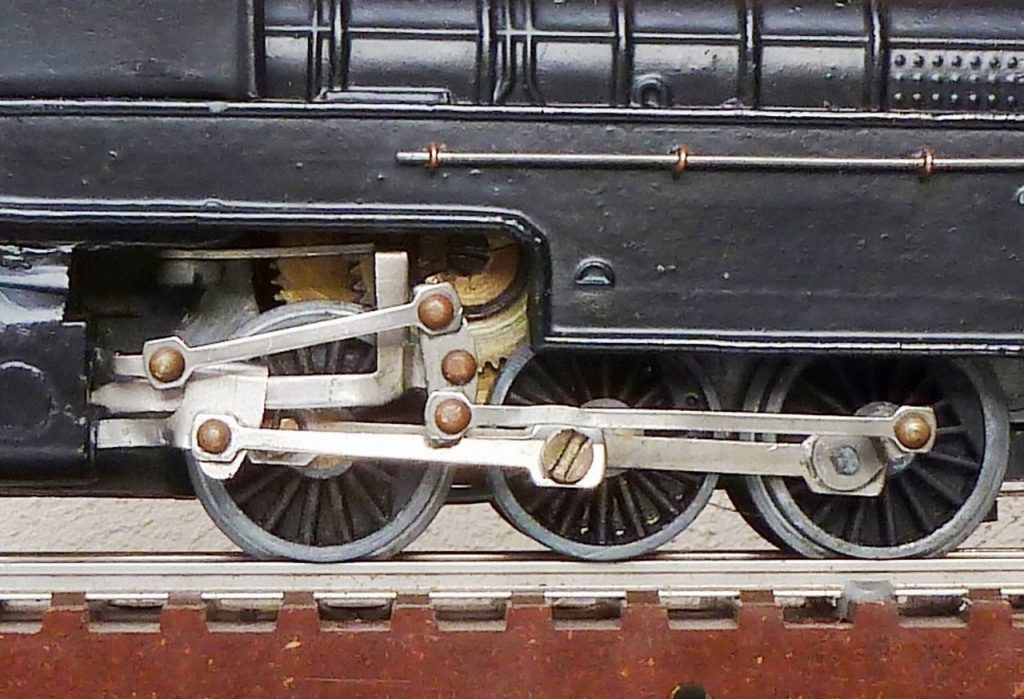
The locomotive is equipped with one large front light
positioned centrally over the bar.
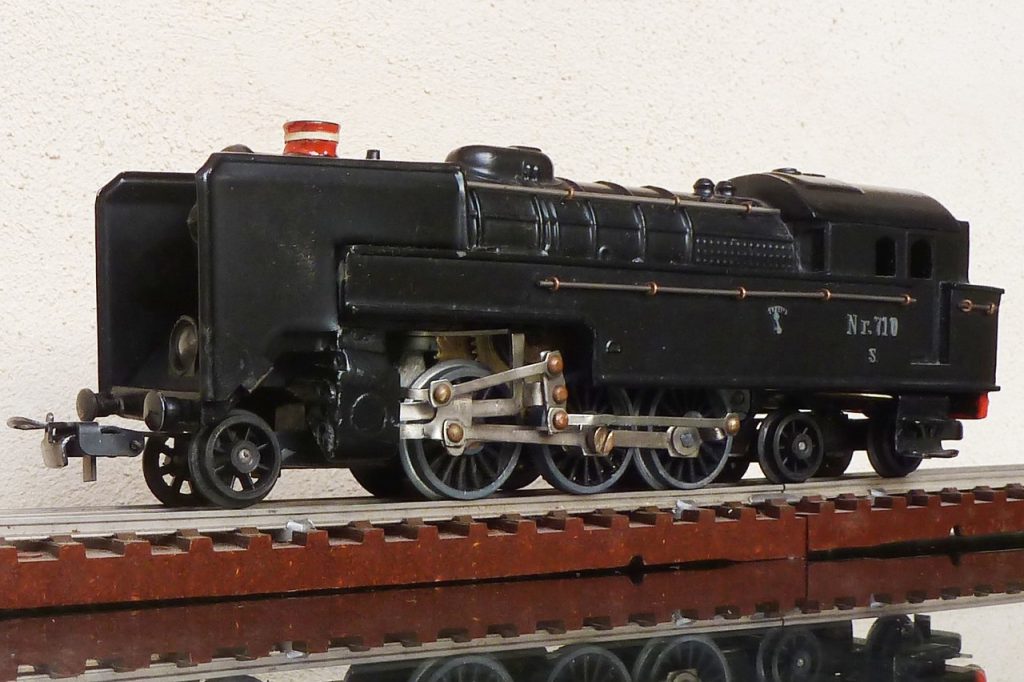
This specimen was sold in ’49 from the “Hobby Model OG” store in Copenhagen.
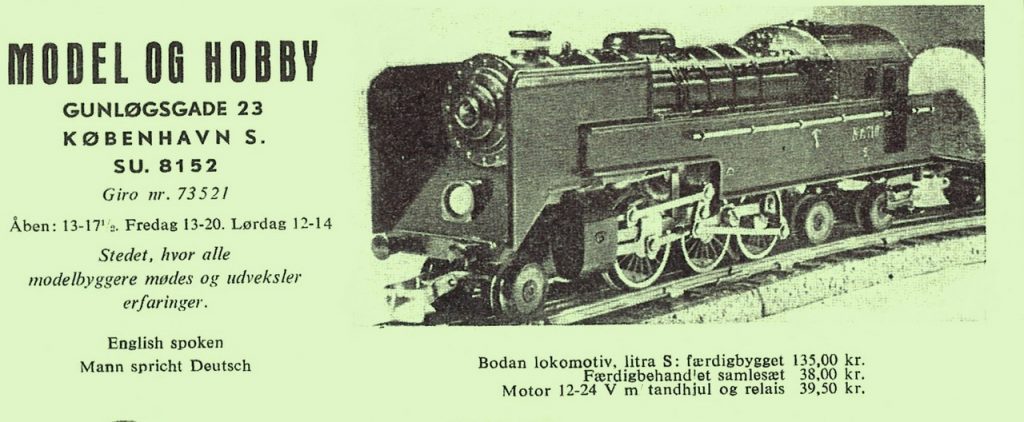
I bought it in Venice in 1970 from a Dane who was living in the lagoon city, and he was literally in love with this city (matching with Antonio Reyna)
This DC version of the Bodan model is equipped with a permanent magnet motor ….
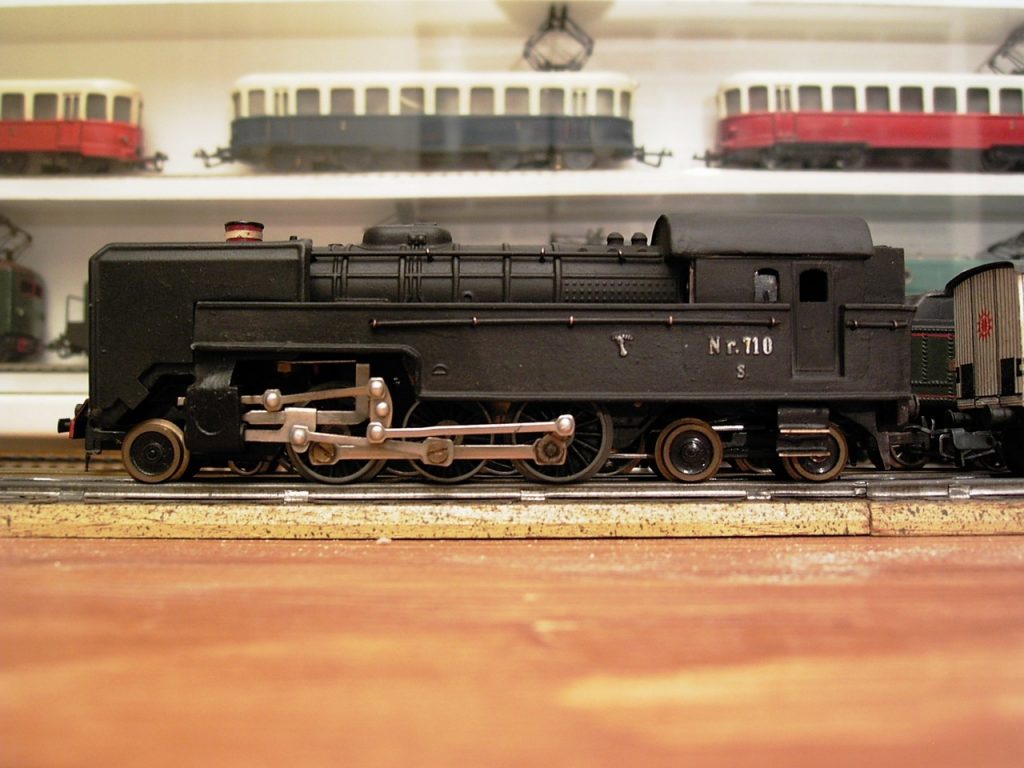
…It is equipped with bearing wheels in full metal sail, burnished handrails
….
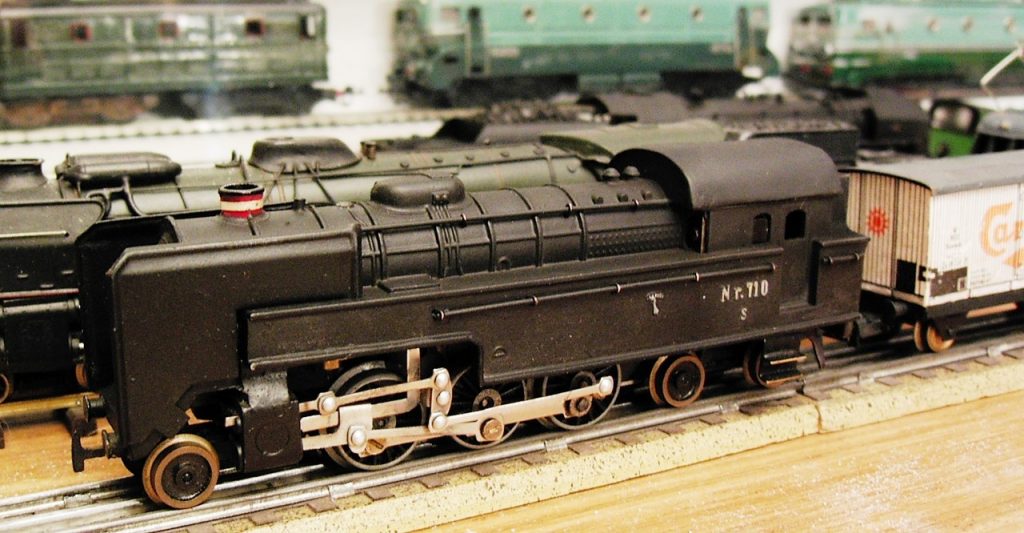
… Rounded cab roof and without pads, couplings hooked.
There probably existed intermediate versions with characteristics mixed between the two versions that I have just described. However, given the rarity of this locomotive, this is not easy to confirm.
And here is the only complete package that I know of this brand with its wooden box ….
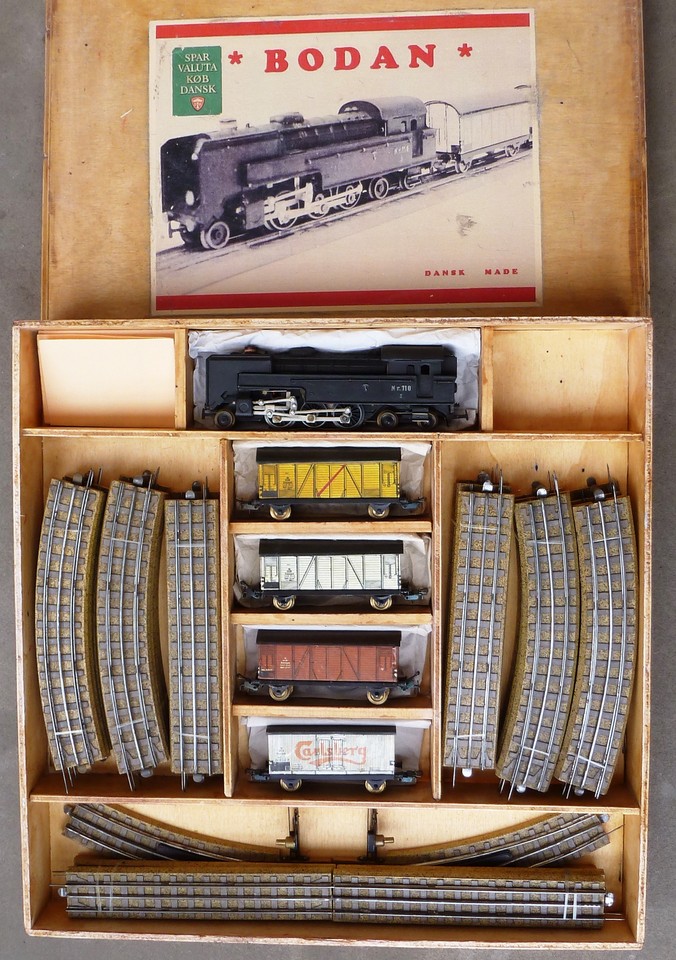
it includes the locomotive, four freight wagons and the rails needed to assemble an oval having two exchanges and double track.
The catalogs I own, apart from the first page which is the only illustrated one, contain only a typewritten summary description of the items with the prices .
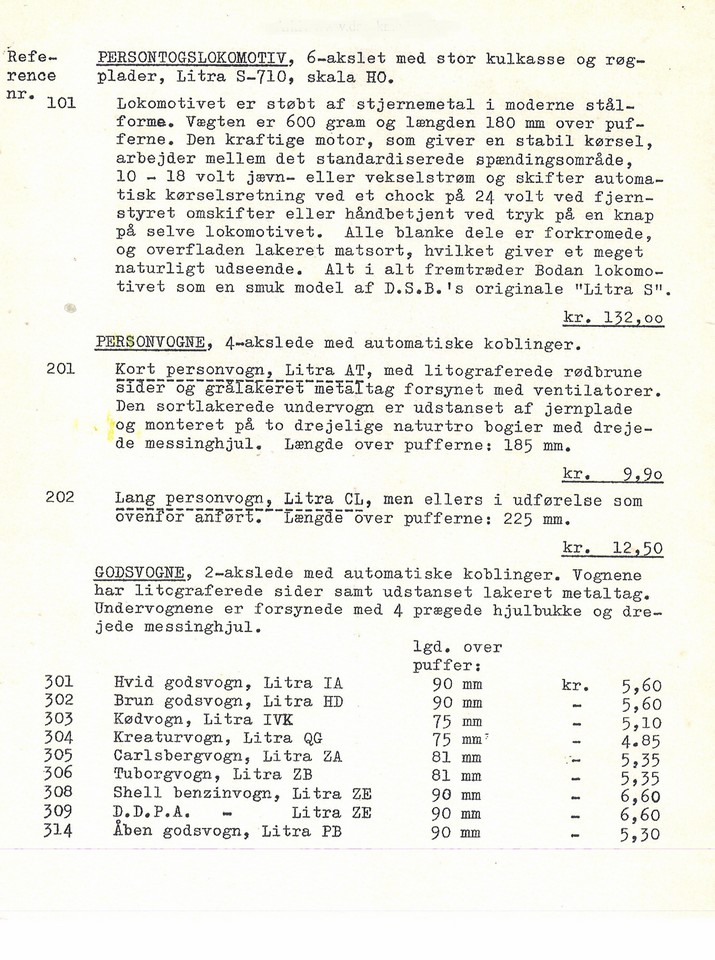 The only one who presents an illustrated page on cars is the “American” of ’52.
The only one who presents an illustrated page on cars is the “American” of ’52.
I do not think that at the time this attempt to export was successful and, despite my research, in the US I have never found any trace of this brand.
The material produced by Bodan is limited to two wagons with double axles, a “long” and a “short” and a dozen freight cars. I never had a passenger car of this brand and I own only the four freight cars in the set already mentioned . This is the design of a closed wagon Bodan, dated ’49.
Wagons are made entirely of iron sheet with sides covered with printed and glued paper and they recall those built by Kleinbahn in the same period (see the article Filippo de Pisis: from remnants of war).
From the picture you can see under the frame that one of the two wagons carry the DSB initials instead of Bodan. These carriages can be fitted with “Maerklin type” hooks or, later, with couplings adaptable to other Danish material such as Otto Michaelsen . The first of these, and also the rarest, is the banana wagon transport …
the second is the refrigerator wagon …
the third is a closed wagon …
the fourth is a transport beer wagon
with the logo of Carlsberg …
and here are two images of a section of Bodan track with the base in painted wood
to represent the roadbed … …
and a switch track … ..
with manual lever drive which well represents the one used at the time . The latest Bodan catalogue is published in 1956 and on it most of the items are declared as “temporarily unavailable”,
the Company at the time was in trouble and suspended production, which unfortunately does not longer restarted ….
… but strangely some accessories appeared
on the same catalogue in the form of sketches, ….
… and unfortunately, since ’56, we lose all trace of this manufacturer, another Danish pioneer of miniature railways of the post Second World War.
And now the artist Antonio Reyna
(@March 30, 2017)


